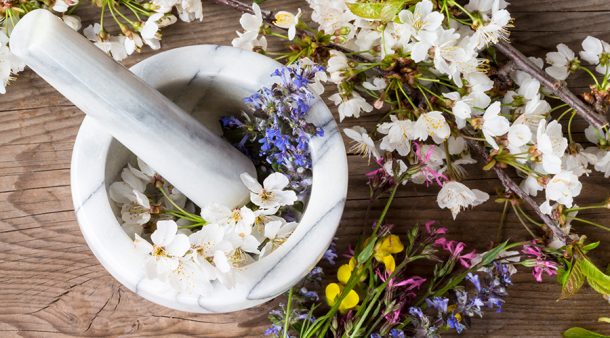
Prostate Health: Understanding Risks, Prevention, and Natural Support
The prostate, a small gland in men, is essential for producing seminal fluid. It sits between the bladder and rectum, wrapping around the urethra. Early prostate cancer often shows no symptoms, but it can mimic benign prostate enlargement (BPH). Common signs include frequent urination, difficulty controlling urine flow, and pain in the hips or lower back. The United States has the highest rate of prostate cancer, with over 230,000 new cases diagnosed yearly. One key factor in prostate health is diet. Foods like soy and flaxseed, which contain phytoestrogens, help balance hormone levels, supporting prostate health. However, harmful fats known as hydrogenated fats can cause hormonal imbalances and clog blood vessels in the prostate, increasing the risk of cancer.
Prostate Cancer Rates in the U.S. and Western Countries
One main reason for high prostate cancer rates is environmental exposure. American men encounter over 60,000 chemicals in food, water, and air. These chemicals, called “xenoestrogens,” mimic estrogen in the body, disrupting hormonal balance. Additional exposures include fluoridated water, cigarette smoke, radiation, heavy metals, and pesticides. A diet high in refined carbohydrates, processed foods, alcohol, and caffeine also contributes to the disease’s development. Consuming green vegetables and herbal teas, like green tea and Essiac tea, can aid in detoxifying the body and reducing inflammation, offering protection against these environmental toxins.
Testing Procedures for Prostate Health
PSA (Prostate-Specific Antigen): PSA is a protein made in the prostate gland. Doctors use blood tests to measure PSA levels, aiming to detect prostate cancer early. Although PSA is a marker for prostate health, sudden spikes can indicate cancer progression. Men should try to keep their PSA levels under 4.0. Reducing the enzyme 5-alpha reductase can lower PSA levels by half, limiting the change of testosterone into dihydrotestosterone (DHT), which promotes prostate cell growth. Supplements like saw palmetto and pygeum may help inhibit DHT production, reducing inflammation and improving urinary flow.
The Gleason Grading: Prostate cancer is graded using the Gleason score. This score assesses how different cancer cells are from normal tissue. Scores range from 2 to 10, with higher scores indicating a higher risk of cancer spread. Poorly differentiated prostate cancer (Gleason 8-10) accounts for most prostate cancer deaths. Alongside conventional treatments, antioxidants such as vitamins C, E, and selenium can help boost the immune system and reduce free radical damage, potentially slowing the progression of the disease.
Treatment Options
Diagnosis and treatment depend on the cancer stage, grade, patient age, and other health issues. Treatment choices include observation, surgery, radiotherapy, hormonal therapy, and chemotherapy. Digital rectal exams and PSA testing help track disease progression and evaluate treatment options. Herbal support like milk thistle can aid liver function during conventional treatments, potentially reducing side effects from chemotherapy and radiation.
Hormones, Men, and Prostate Health
Natural estrogen is vital for men’s health, not just for women. However, exposure to estrogen-like pollutants (xenoestrogens) can lead to lower sperm counts, reduced testosterone, and testicular issues. The prostate, like the uterus in women, can be affected by hormonal imbalances. Excess estrogen and DHT can cause prostate enlargement and cancer. A small amount of progesterone cream may help reduce an enlarged prostate and lower PSA levels. Moreover, incorporating foods like soy and flaxseed can provide phytoestrogens, which help balance hormones and support prostate health. Additionally, supplements like Coenzyme Q-10 can support cellular energy and exhibit anti-cancer properties. However, men should discuss hormone replacement therapy and supplementation with their doctor, especially if they have a history of cancer.
Risks and Precautions
To lower the risk of prostate cancer, reduce exposure to xenoestrogens by avoiding plastic packaging and hormone-laden animal products. Opt for organic or free-range animal protein, increase consumption of phytoestrogen-rich foods like soy, flaxseed, and green vegetables, and seek professional advice for safe detox methods. Including green vegetables like broccoli and spinach in the diet provides essential nutrients and supports liver detoxification. Herbal remedies such as saw palmetto, pygeum, and nettle root can help improve urinary flow and reduce inflammation in the prostate. Reducing exposure to electromagnetic radiation, such as keeping cell phones away from the body, can also help minimize cancer risk.
Prostate Cancer: Additional Considerations
- Testing and Monitoring: The PSA blood test helps detect prostate cancer. Men over 50 should have regular screenings, especially those at higher risk. Including antioxidants like vitamins C, D3, and E in daily supplementation can support the immune system, offering additional protection against prostate issues.
- Dietary Influence: A diet high in processed foods, hydrogenated fats, refined carbohydrates, and alcohol can irritate the prostate and deplete essential nutrients like magnesium, zinc, and selenium. Adding a variety of antioxidant-rich foods like berries, green tea, and tomatoes can offer protection against oxidative stress and support prostate health.
- Insulin Resistance: Men with high insulin levels may have a 2-3 times greater risk of prostate cancer. Managing blood sugar through a balanced diet rich in fiber and low in refined sugars can help reduce this risk.
- Lifestyle Factors: Sexual activity, smoking, and exposure to environmental toxins all influence prostate cancer risk. Regular physical activity and stress management techniques, combined with dietary support like omega-3 fatty acids from flaxseed or fish oil, can promote overall health and reduce cancer risk.
Diet for Prostate Health
A healthier diet can significantly impact prostate health. Limiting processed foods, alcohol, caffeine, and soft drinks can reduce irritation and inflammation. Consuming a variety of vegetables, such as broccoli, Brussels sprouts, and spinach, supports the body’s natural detoxification processes. Adding flaxseed to the diet provides essential fatty acids and lignans that help balance hormones. A more vegetarian or raw food diet can help decrease cancer risk, although it may not prevent it entirely. Foods like garlic, onions, berries, green and black tea, cruciferous vegetables, and citrus fruits contain antioxidants and compounds that help prevent cancer. Incorporating green tea into your daily routine can provide polyphenols that have been shown to have anti-cancer effects. In addition, supplements like alpha-lipoic acid and zinc can support cellular health and hormonal balance.
Supporting Prostate Health Naturally
Supporting prostate health involves a holistic approach that includes dietary adjustments, herbal support, and lifestyle changes. Incorporating phytoestrogen-rich foods such as soy, flaxseed, and green vegetables into your diet can help balance hormone levels. Avoiding irritants like alcohol, caffeine, processed foods, and sugary drinks reduces inflammation and supports the prostate. Herbal supplements like saw palmetto, pygeum, and nettle root help reduce urinary symptoms and support prostate health. In addition to these, minerals like zinc and magnesium play a crucial role in maintaining prostate function and overall well-being. For those looking for additional support, Coenzyme Q-10 and antioxidants such as vitamins C, D3, E, and alpha-lipoic acid can boost the immune system and protect against free radical damage.
Emotional Health and Energy Medicine
Unreleased emotions, particularly around sexuality and self-worth, can lead to energy blockages that affect the prostate. Practices like meditation, massage, and energy healing can help release suppressed emotions and promote circulation and healing in the prostate area. Addressing emotional health is a vital aspect of a comprehensive approach to prostate health, as it can impact hormone levels and stress response, which are closely linked to overall well-being.
Conclusion
Prostate health is influenced by many factors, including diet, lifestyle, hormone balance, and emotional well-being. Regular screenings, dietary adjustments, and natural supplements can support prostate health and potentially reduce the risk of cancer. Men should focus on maintaining hormone balance, reducing exposure to environmental toxins, and incorporating holistic practices to promote overall prostate health.


